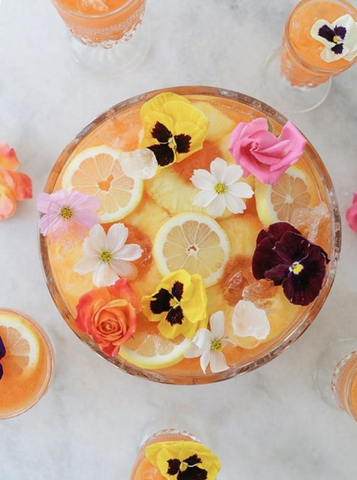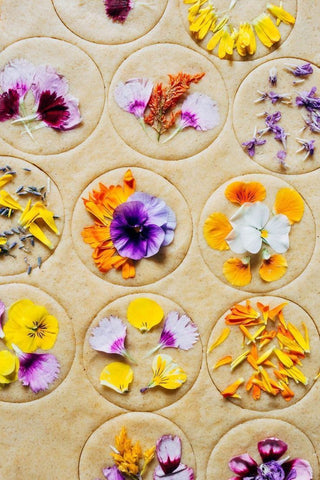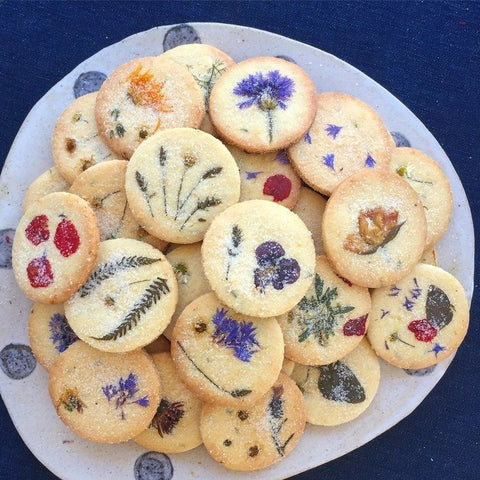Edible Flowers 101: A Beginner's Guide to Using Them in the Kitchen
By: palettedeflores.com.au
Edible flowers are a unique and beautiful addition to any dish, but did you know they can also add flavour and nutrition? From sweet to savoury, there are many ways to incorporate these delicate blooms into your cooking. Learn about the different types of edible flowers and how to use them in your dishes with this helpful guide.

Image of Pinterest. Photo by @Pizzazzerie
Know Which Flowers are Safe to Eat
Know which flowers are suitable for consumption before using them in your recipes. Some flowers might even be harmful, and not all flowers are edible. Roses, violets, lavender, and nasturtiums are a few common edible flowers. However, it's crucial to complete your homework and confirm that you are utilising the appropriate flower variety. Avoid purchasing edible flowers that have been treated with pesticides or other chemicals and always get them from reliable sources.

Image of Pinterest. Photo by tMichelle Ferrand | Cup of Zest
Use Edible Flowers As a Garnish or Ingredient
There are numerous methods to use edible flowers in cooking. They can be used as a garnish to give a dish a splash of colour and aesthetic appeal. Add a few petals to a salad, bowl of soup, or dessert. There are recipes that call for edible flowers as an ingredient. For instance, you can give baked dishes or sauces a delicate flowery flavour by infusing cream or butter with lavender or rose petals. In recipes, nasturtiums can be substituted for capers, and candied violets can be used as a garnish on cakes and cupcakes. There are countless options!

Image of Pinterest. Photo by BuzzFeed
Experiment With Different Flavours and Textures
One of the most exciting things about using edible flowers in the kitchen is the opportunity to experiment with different flavours and textures. Some flowers, like rose and lavender, have a delicate flowery taste that goes well with sweet foods. Others have a peppery or spicy flavour that can provide a bite to savoury recipes, such as nasturtiums and chive blooms. The texture of edible flowers should be taken into account when utilising them in recipes. Some blooms, such as violas and pansies, have a delicate texture that is easily wilted or harmed. Some ingredients, such as calendula and marigold, have a somewhat chewy texture that can give a meal a special touch. Don't be scared to experiment with different combinations to find what suits your taste the best.
Consider the Colour and Appearance of the Flowers
It's crucial to think about a flower's colour and appearance before incorporating it in a meal. Pansies and marigolds, which have vivid colours, can offer a splash of colour to a dish, while lavender and camomile, which have softer hues, can have a calming effect. The size and shape of the flowers should also be taken into account because they can provide a dish more visual intrigue and texture. For instance, a garnish of small, delicate flowers, like violets, can offer a sense of refinement to a dessert, or a bolder presentation can be made with the use of larger flowers, like hibiscus.
Store and handle edible flowers properly
To preserve their safety and freshness while using edible flowers in cooking, it's crucial to store and manage them appropriately. To begin with, only use flowers that have been officially designated as edible and have not received any pesticides or chemical treatments. For the greatest flavour and look, keep them in a cold, dry location and use them right away. Remove any stems or green pieces and gently wash the ingredients in cold water before using them in your cuisine. Finally, keep in mind that certain persons can be allergic to or sensitive to particular kinds of flowers, so use them sparingly and moderately.




















